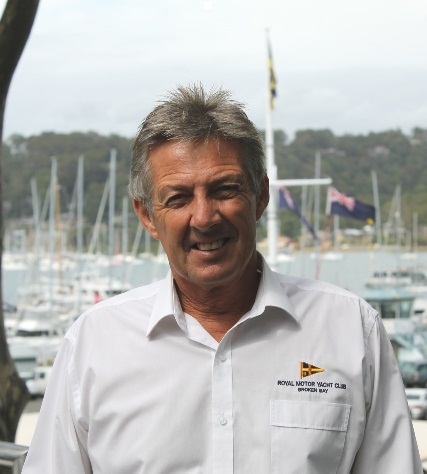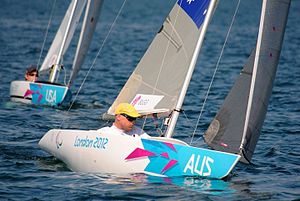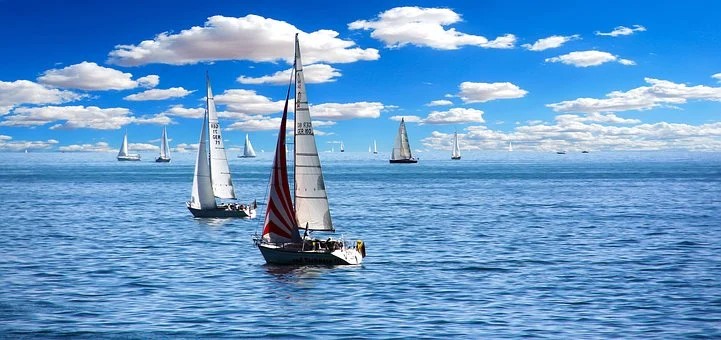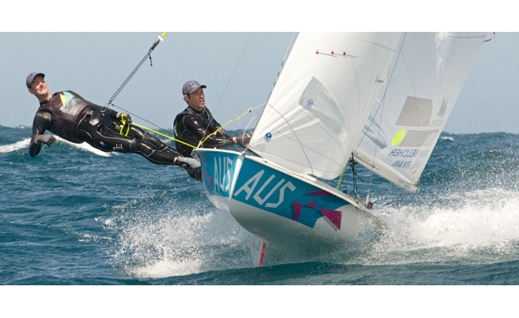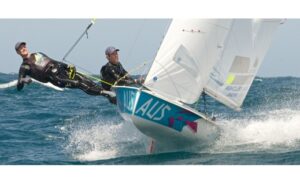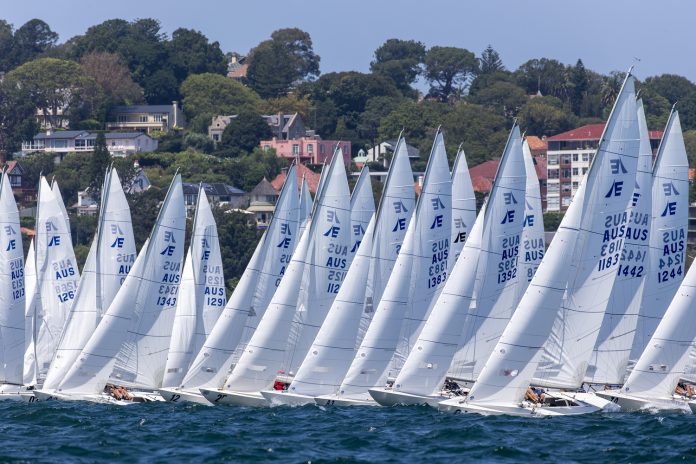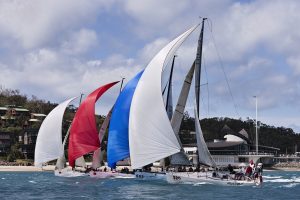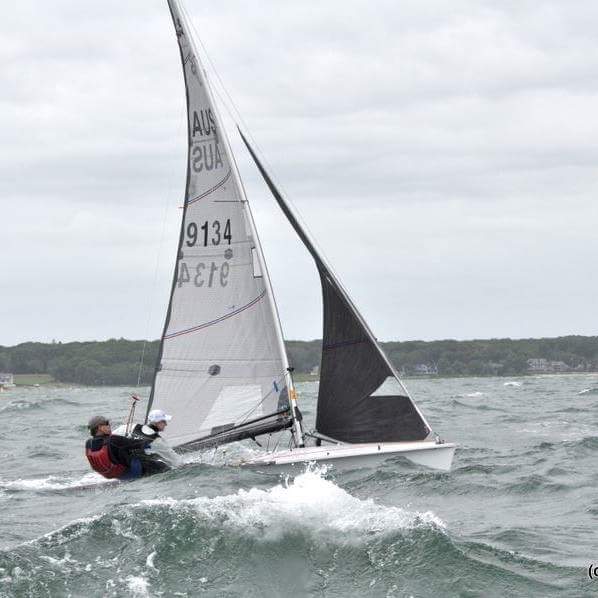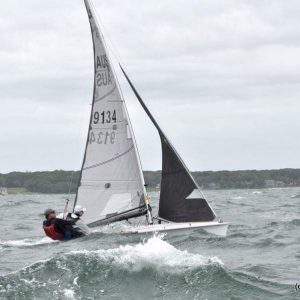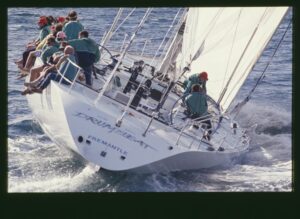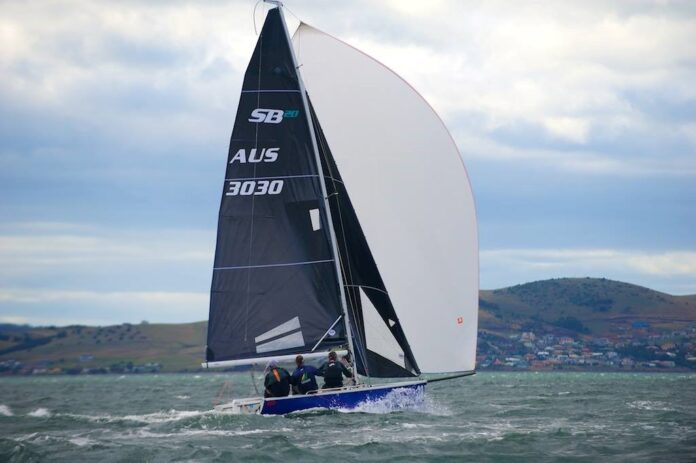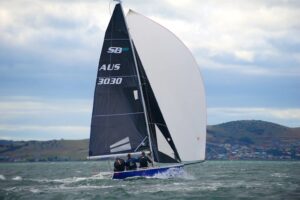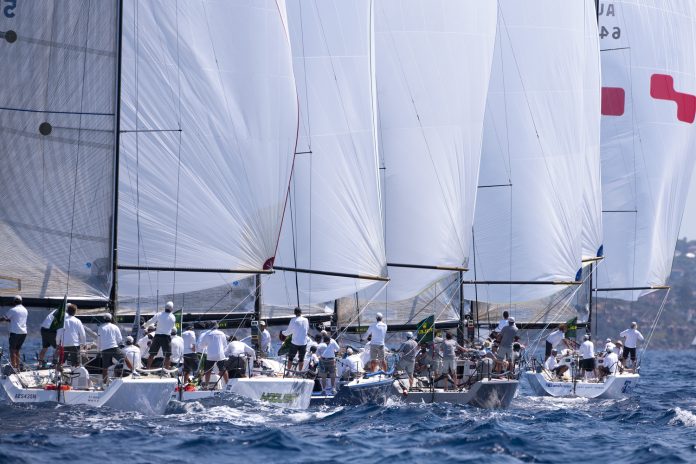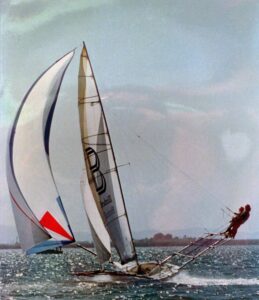
I have copied below parts of an interview I did with Rob Brown on Strategy and Tactics
Rob is one of Australia’s absolute sailing treasures and a regular nice guy.
Rob is one of those special sailors who has done more than most of us could ever dream of achieving in our sport and is completely humble and down to earth. He has sailed everything from 18’skiffs where he was a world champion to being a crew member of Australia 2 when they won the America’s Cup in 1983.
In 1984, Rob was awarded one of Australia’s highest accolades, the Order of Australia Medal. The award for “Outstanding Contribution to Sport” was soon to be followed by the inclusion to the Australian Bi-Centennial Hall of Fame for being part of the “Best Australian Sporting Team Ever – Australia II”.
AUSSIE SAILORS – DISCOUNTED STW BOOK AND BONUSES
Brett: How far from the bottom mark would you start planning your upwind strategy? Of course, it depends on what’s going on, on the boat but do you start to plan your upwind strategy while going down the run?
Rob: Well, most definitely. That’s a very interesting question because theoretically, you should be doing it halfway down the run.
Say the bottom third of the run, you should be thinking about what you’re doing upwind.
But if there are boats around you, you’re fighting for air, and competing for a position to get inside running at the next mark, then it doesn’t give you a lot of opportunity to look around.
That’s where if you’re in a two or three, probably more, so with a three-man boat, that person should be looking behind, he should be calling the wind pressures downwind.
He should be saying that he likes the left-hand side of the course better than the right-hand side or whatever as you’re coming down to that bottom mark.
That really places a lot of responsibility on the person to not get involved in the immediate tactics that are going on around the boat but to get his head out of the boat and think about the bigger picture a minute, two, three minutes ahead.
Brett: Obviously there’s going to be some indicators when you’re going downwind as to which side of the course the pressures on. If you’re back in the fleet you can look at who’s already gone around the mark, what’s going on with them, how high they are, who’s gone where and that sort of thing.
Rob: Say if your compass heading as you’re coming down on the bottom mark, whether you’re in a lift or a knock.
I tend to try and get my head out of the boat and look for…I use the term, dominant pressure…where is the dominant pressure on the course.
If it’s in sort of fluky light to medium conditions, my general rule is to get to the dominant pressure and then work out whether there’s a lift or knock when you get there, whether it’s upwind or downwind.
AUSSIE SAILORS – DISCOUNTED STW BOOK AND BONUSES
Brett: Okay, so what you’re saying is you sail for pressure rather than lifts generally?
Rob: Well, if there’s no other consideration, go for pressure.
Pressure is dominant pressure.
Look, there’s no point doing lifts and knocks if you’re not in the dominant pressure.
If there’s a definite windline or band of breeze, the obvious thing would be to get to that pressure and then play that pressure.
Brett: I don’t know how much current you get here in Sydney Harbor but some of the other places you’ve sailed there has been plenty. Do you take a huge note of current? How do you work out where it is and what it is?
Rob: Well I think that, that comes down to your research before the regatta, and how much information you can get on tidal flow, and coming up with how dominant the current is in your decision-making compared to pressure.
If you’re sailing in Cowes, for example, where you get three or four knots or current, then all of a sudden that becomes a major influence on your strategies.
In Sydney Harbor, which I’ve done a lot of sailing on, you’ve got a knot, knot and a half current.
Then it all depends on how much breeze you’ve got. If you’ve got 20 knots with 1 and a half knots of current, that’s not quite as important.
But if it’s 8 to 10 knots with a knot and a half current then definitely I look at my tide tables over and over again.
I’ve probably got them printed on my brain now and I know it pretty well.
But, obviously, there are certain tactics of being out in the current for assistance in getting out of it if you’re sailing against it and that with experience becomes really an automatic strategy before the race.
If you’re going to be fighting current upwind, your strategy before the race would be to obviously try and get out of the current upwind and stay in it downwind.
AUSSIE SAILORS – DISCOUNTED STW BOOK AND BONUSES
Brett: If you’re at a new venue, say you’re going to be sailing in Port Philip or you’re going up sailing in Morton Bay in Queensland, obviously, you don’t have that indelibly etched in your brain. How do you work out the currents? Do you look at the tide tables?
Rob: If we’ve got a major regatta, Auckland Harbor, Port Phillip Bay, there’s not that much current there, but there is current.
I would be researching that, talking to locals and getting as much information I can on current flow, months before the regatta.
Realistically, when you get there, you’re not looking at a bit of paper to tell you where to go.
You’ve done the research before the regatta and on the race day, you’re saying, all right, I’ve got this wind direction, we’re going to have this current throughout the race period so these are the things that we should be doing.
You have that as your database. Then you’re reacting to that database around the track.

